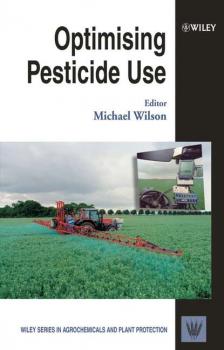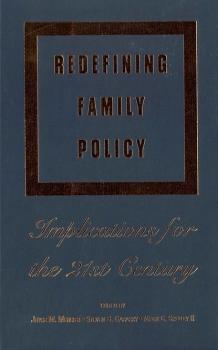Биология
Различные книги в жанре БиологияProfitable Organic Farming
The demand for food produced from sustainable and organic farm enterprises continues to grow worldwide, with demand exceeding supply for many items. This second edition of an extremely well received and successful book covers every aspect of an organic farm enterprise that can have an influence on profitability. As such the book is an essential purchase for all those involved in organic and sustainable farming. Topics covered in this second edition of Profitable Organic Farming include grassland productivity, production systems for dairy, beef, sheep, pig, poultry and arable farms, farm size and enterprise combinations, organic standards, financial management, marketing, success factors and progress by organic farmers. The book concludes with a new chapter covering potential future scenarios for organic farming. Drawing on new information available in the area and including case studies from successful organic farm businesses, the author Jon Newton has written a book that is of great commercial use to a wide range of workers including organic farm managers and those wishing to commence organic farming operations. The book is also of great use and interest to agricultural scientists and students and those working in government and regional agricultural advisory services worldwide. Libraries in research establishments, universities and colleges where agricultural sciences are studied and taught should have several copies of this important and useful book on their shelves. Review of the first edition ‘It is an essential volume for any commercial organic farmers or budding organic farmers bookshelf. It will no doubt also be a very popular read and provide much food for thought amongst many agricultural students’: New Farmer & Grower. Jon Newton is an agricultural consultant specialising in organic and sustainable agriculture based in North Wales, UK.
Optimising Pesticide Use
Optimising Pesticide Use brings together the wide range of scientific disciplines necessary to ensure best practice through monitoring what is used and improving how it is formulated and applied. The book provides: An in-depth exploration of pesticide optimisation from the view point of industry and research scientist A case study on the development of a new range of active chemistries from bacteria A discussion of complementary pest control methods This text will provide essential information to workers in the pesticide industry and regulatory community who need to be aware of current thinking and advancements in the optimal use of pesticidal compounds and systems, as well as environmental organisations and aid development organisations.
Agricultural Development Policy
Prepared under the aegis of the Food and Agriculture Organization of the United Nations (FAO), this text presents a fresh and comprehensive look at agricultural development policy. It provides a clear, systematic review of important classes of policy issues in developing countries and discusses the emerging international consensus on viable approaches to the issues. The text is unique in its coverage and depth and it: Summarises hundreds of references on agricultural development policies Cites policy experiences and applied studies in more than 70 countries Provides guidance for policy makers giving examples of successes and failures Reviews issues related to the formulation of strategies and the requirements for making them successful Develops the conceptual foundations and illustrates policies that have worked, and some that have not, with explanations Topics covered include agriculture’s role in economic development, the objectives and strategies of agricultural policy, linkages between macroeconomic and agricultural policy, policies for the agricultural financial system and agricultural technology development. Upper level undergraduates taking courses in Economic Development and International Development and graduates taking courses in Agricultural Development, International and Economic Development, Natural Resource Management and specialised topics in agriculture will find this text of great interest. It also serves as a reference for professionals and researchers in the field of International Development.
Pesticide Application Methods
Pesticide Application Methods is the standard work for all those involved in crop protection. This fully revised edition provides up-to-date information on the different types of application techniques and how they should be used to ensure efficient and effective pest control. Detailed information is provided on the role of chemical control in crop protection: targets, formulations and droplets, spray quality and the choice of nozzles are discussed, as are improvements in the design of new equipment, safety precautions and maintenance issues. Two new chapters highlight the application of biological pesticides and equipment used in the evaluation of pesticides. This important new edition is a commercially important reference tool and will be of great use and interest to all those working in crop protection, including agricultural entomologists and plant pathologists, pesticide scientists, advisors and consultants, large-scale growers, agricultural and horticultural scientists, agrochemical industry personnel including those involved in equipment supply and product formulation. Libraries in government and commercial research establishments, universities and agricultural colleges and anywhere the subject is taught or studied should have multiple copies of this definitive book on their shelves.
Science for Agriculture
Science for Agriculture was the first thorough quantitative and analytical treatment of the history of the U.S. agricultural research system and as such has served as the foundation for research over the 10 years since its publication. The benefits from public and private investment in agricultural research are immense and should be understood by every student of the agricultural science system in the United States. The second edition updates important landmarks, components, characteristics, and trends of the U.S. system for developing and applying science to increase the productivity and advancements of agriculture. Science for Agriculture, 2nd Edition, is essential reading for agriculture educators and researchers, Land Grant administrators, food and agri-industry R&D and all others who need to understand the factors that will influence future public agricultural research policy.
Weed Management Handbook
Weed Management Handbook updates the 8th edition of Weed Control Handbook (1990). The change in the title and contents of the book from previous editions reflects both the current emphasis on producing crops in a sustainable and environmentally-friendly manner, and the new weed management challenges presenting themselves. This landmark publication contains cutting edge chapters, each written by acknowledged experts in their fields and carefully drawn together and edited by Professor Robert Naylor, known and respected world-wide for his knowledge of the area. The sequence of chapters included reflects a progression from the biology of weeds, through the underpinning science and technology relating to weed management techniques including herbicides and their application to crops, leading to principles of weed management techniques. Finally a set of relevant case studies describes the main management options available and addresses the challenges of reduced chemical options in many crops. Weed Management Handbook is a vital tool for all those involved in the crop protection / agrochemical industry, including business managers, horticultural and agricultural scientists, plant physiologists, botanists and those studying and teaching BASIS courses. As an important reference guide for undergraduate and postgraduate students studying horticultural and agricultural sciences, plant physiology, botany and crop protection, copies of the book should be available on the shelves of all research establishments and universities where these subjects are studied and taught. Weed Management Handbook is published for the British Crop Protection Council (BCPC) by Blackwell Publishing.
Redefining Family Policy
Aimed at social scientists, this book discusses family policy in general and the New Federalism in particular, and experimental implementation of the Personal Responsibility and Work Opportunity Reconciliation Act (PRWOA) in the United States. Here, emphasis in family policy is shifted from a centralized entitlement approach to an exchange of personal responsibility, work, and training for better support services.
Breeding Major Food Staples
As the world’s population increases the need to produce greater quantities of major staple crops such as wheat, rice, maize, potato, cassava, soybean, sweet potato, barley, and banana in order to sufficiently feed the people of the world continues to grow. Breeding Major Food Staples covers improving yields and quality of these crops through breeding and the use of molecular biology tools such as gene transfer, genome mapping, biofortification, and bioinformatics. This book will be an important reference for anyone working in crop breeding.
Multi-Site Pig Production
Multi-site Pig Production is the first comprehensive description of the most profound changes that have occurred in swine production methodology in many years. Dr Harris is singularly qualified to write this book because he has played a pivotal role in the development of multi-site rearing techniques that are being applied throughout the world. This book provides final definition for a variety of terms being used to describe swine production methods. A standardised nomenclature facilitates more accurate future interactions between participants in swine production systems that involve multiple sites, buildings, and rooms with different age groups and functions.
Teamwork in Poultry Production
Today more than ever before in the history of the poultry industry there is a concerted effort to improve the working relationship between the grower and the integrator. Teamwork in Poultry Production picks up wher Larry Cole's previous book, Communication in Poultry Grower Relations, left off. While the first book concentrated on organizational improvement, this book focuses on the specific interpersonal skills needed in the industry to create a synergistic working relationship-a topic which, until now, has been largely ignored. Written in a down-to-earth training style, this book: 1 Details the interpersonal and communication issues that determine the success of the employee-grower working relationship 2 Outlines the responsibilities of both the contract grower and the company employee, providing a detailed description of what each party can do to improve the working relationship on the farm 3 Creates a behavioral blueprint that can be easily implemented by the entire grower-employee network 4 Serves as the resource for ongoing training efforts with employees and growers









